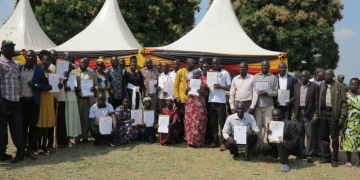
As Nepal’s Prime Minister K.P. Sharma Oli breaks with long-standing diplomatic tradition by making Beijing, rather than New Delhi, his first foreign visit this December, a troubling trend of Chinese economic influence and subsequent disappointment is unfolding across South Asia. The region’s smaller nations are realizing that China’s grand promises of economic partnership through the Belt and Road Initiative (BRI) frequently result in mounting debt, unfeasible infrastructure projects, and an alarming lack of flexibility when financial difficulties arise.
Nepal’s experience with Chinese investment serves as a particularly telling case. The Pokhara International Airport, built with a $220 million Chinese loan, stands as a symbol of Beijing’s problematic approach to infrastructure financing. Despite its completion in 2023, the airport has failed to attract regular international flights, transforming what was meant to be a tourism gateway into a financial burden for the Nepali government. Nepal’s unprecedented request to convert the loan into a grant underscores a growing recognition that China’s financial commitments often mask hidden costs and inflexible terms, trapping countries in a cycle of debt.
Nepal’s situation is further complicated by regional dynamics. India’s reluctance to grant additional air routes for the airport, citing security concerns and objections to Chinese involvement, has severely restricted the facility’s potential for international operations. This has created a perfect storm where Nepal faces both operational difficulties and escalating debt obligations, with China showing no willingness to offer relief through loan waivers or restructuring.
The Maldives presents a similarly troubling example of China’s rigid economic approach. Despite President Mohamed Muizzu’s initial pro-China stance and controversial “India Out” campaign, his government has been forced to pivot back to New Delhi due to mounting debt. The island nation’s staggering $1.3 billion debt to China, compared to a more modest $130 million owed to India, has created an unsustainable financial burden for a country of just half a million people.
The Maldives’ financial predicament is dire, with projected debt service costs of $600-700 million in 2025 and over $1 billion in 2026. These numbers are especially alarming given the country’s foreign currency reserves of only $437 million as of August 2024, barely enough to cover a month and a half of import bills. These harsh realities have forced President Muizzu to seek assistance from India, culminating in a $400 million currency swap agreement that provides much-needed liquidity.
China’s strategy in South Asia follows a well-established pattern: offer large loans for infrastructure projects under the BRI, secure strategic assets, and enforce rigid lending terms when recipient countries encounter financial difficulties. This approach has led to what critics describe as “debt-trap diplomacy,” where nations become politically and economically beholden to Beijing long after the initial excitement of development promises has faded.
The consequences of this strategy extend beyond immediate financial concerns. Chinese-funded projects often turn into white elephants, burdening national budgets without delivering the anticipated economic benefits. The struggles of Pokhara airport exemplify how these projects can fail to account for regional realities and market demands, leaving recipient countries to bear the brunt of overambitious plans and inadequate feasibility studies.
Additionally, China’s approach has fostered diplomatic tensions within the region. Nepal’s efforts to balance relations between India and China have become increasingly complex, with infrastructure projects acting as potential diplomatic flashpoints. The restriction of air routes to Pokhara airport highlights how Chinese involvement can complicate bilateral relations with other regional powers, particularly India, which views China’s expanding influence in its traditional sphere with growing concern.
The contrast between China’s rigid stance and India’s more flexible approach is stark. While India may have its own strategic interests, its willingness to provide emergency financial support and renegotiate terms reflects a more sustainable model for regional partnership. The recent $400 million currency swap agreement with the Maldives illustrates this difference, as does India’s historical tendency to adjust project terms based on the needs of its partners.
The implications of China’s lending practices are particularly concerning for smaller nations in the Global South. The apparent advantages of Chinese loans—fewer questions asked, faster approvals, and less emphasis on environmental or social impact—often disguise long-term costs and inflexibility that become evident only when projects fail to meet expectations. This creates a cycle of dependency, where countries become increasingly reliant on Chinese funding while struggling to meet their obligations.
The BRI’s track record in South Asia suggests that China’s economic engagement strategy prioritizes its own strategic interests over the development needs of recipient countries. When faced with requests for debt relief or restructuring, Beijing’s reluctance to offer meaningful concessions highlights the transactional nature of its relationships with smaller nations. This approach sharply contrasts with the development partnership model many countries aspire to.
As PM Oli prepares for his Beijing visit and President Muizzu confronts his country’s debt crisis, both leaders face the harsh reality that China’s promises of economic partnership often lead to dependency, not development. Their experiences serve as a cautionary tale for other nations considering similar engagements with the BRI, underscoring the importance of carefully evaluating the long-term implications and true costs of Chinese infrastructure financing.
The solution for South Asian nations may lie in diversifying international partnerships and thoroughly assessing the long-term impact of infrastructure financing agreements. The current debt struggles in the region illustrate the need for more sustainable development approaches that prioritize economic viability over geopolitical considerations. As the experiences of Nepal and the Maldives show, the true cost of Chinese investment often becomes apparent only when it is too late to change course.










Discussion about this post